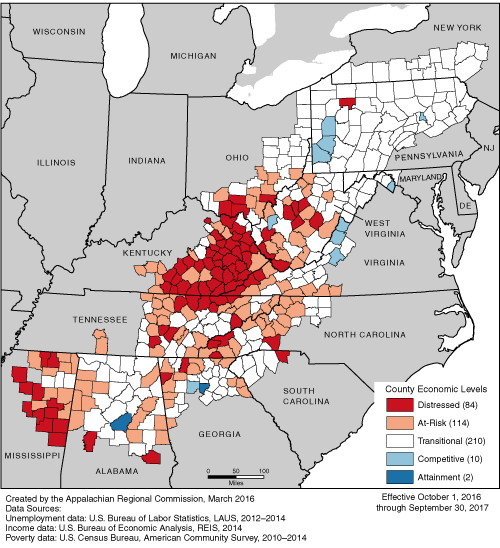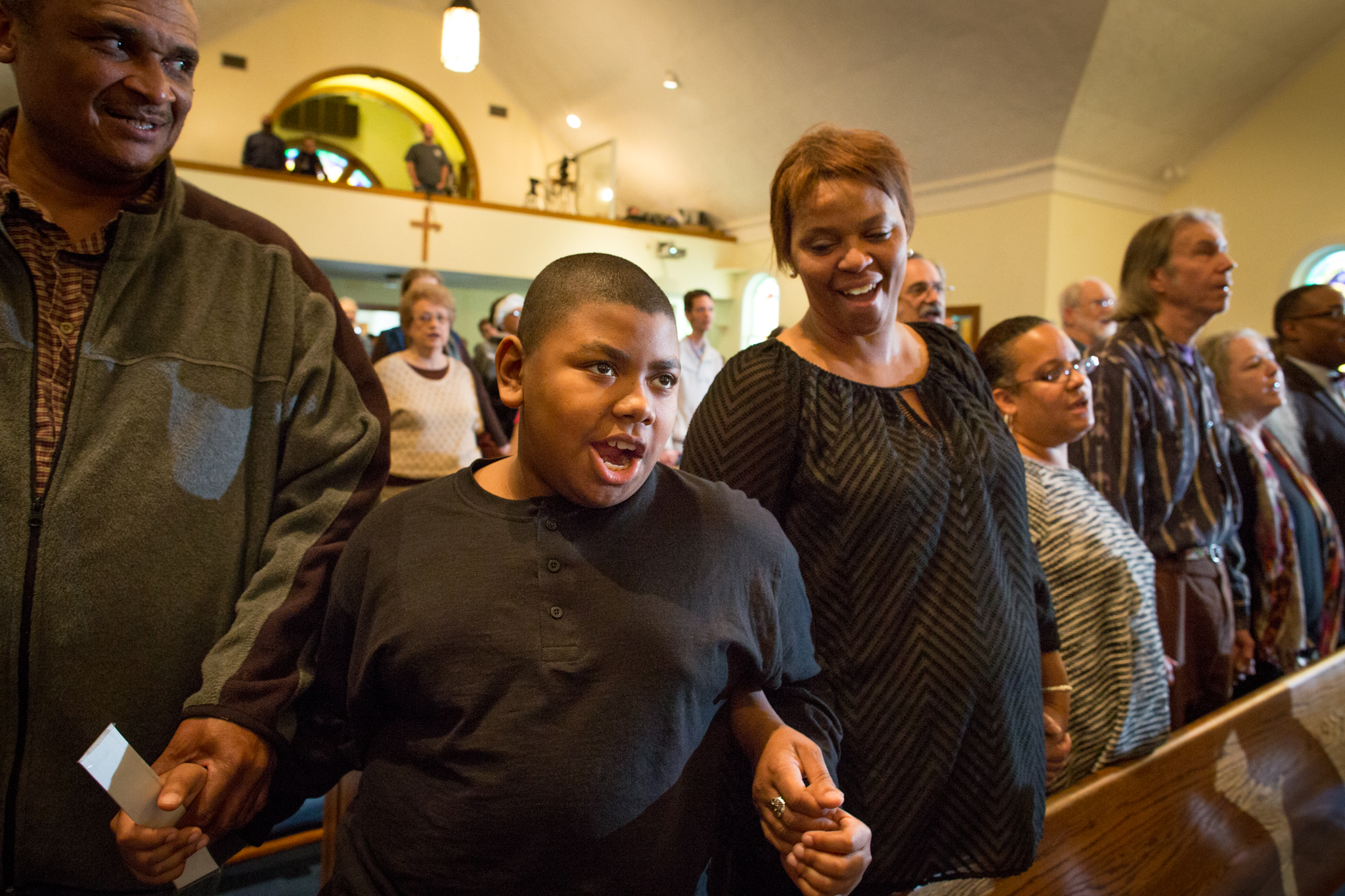There are many competing and overlapping definitions of Appalachia. In the larger U.S. culture, the one birthed by local color fiction in late 19th Century popular national magazines struck root. While this prototype has mutated, its many iterations still largely dictate to the wider U.S. imagination what supposedly really ranks as Appalachia.
Concurrent with these serial pieces on lost “mountain ancestors,” another perhaps even more foretelling story for Appalachia was propagandized. Unlike the serials’ tales of salt-of-the-earth, clannish, feuding, poor, white, uneducated, male, moonshining hillbillies, the pamphlets and journals promoted by South-of-the-Mason-Dixon land speculators used science and statistics to sell domestic and European investors on their section of Appalachia as an untapped reserve ripe to experience the fiscal prosperity of the industrializing U.S. North.
In short order, the wealthiest, most cosmopolitan financiers on earth (for example, J.P. Morgan), poured money into Appalachia and bought massive land-holdings, propped up “coal barons” to carve out mines and towns in a romanticized Eastern version of the “Wild West,” finagled in railroads, secured indefinite federal fiscal incentives, dispersed recruiters down South and abroad to lure in tens of thousands of cheap laborers and fueled two energy sectors: coal and oil.
The high demand for labor in the first seventy-coal-producing-years buttressed a new coal-centered network of towns, and thus, a coal-centered culture was dug in. Here, the collective coal industry reigned as King. Coal provided that section of Appalachia with massive employment until the introduction of the continuous miner machine in the mid-1950s. Within five years, automation cut the need for actual human coal workers by half. Since then, employment with King Coal has continued to fall, generally due to technology or pricing displacement.
Yet, here we still find ourselves in the 21st Century with a mountain-bred white coal miner as the larger U.S culture’s standard-bearing Appalachian. Like anywhere, the facts on the ground are more complex. In short, what other Appalachians are there? And from this prototype Appalachian, can we even get to those Appalachians from here?
Like most any “region” or state, Appalachia is a political and a created place, patched together largely by business people, politicians, bureaucrats, lawyers and academics. With respect to the latter, Appalachian Studies pieces together an Appalachia through a range of historic, literary, musical, political, sociological, artisan, artistic and theological lineages and line-ups. That field also brings us an Appalachia of exploitation, labor uprisings, internal imperialism, externalized environmental costs, sacrifice zones: a place discarded, corrupt, abused, with towns, people and landscapes left for dead.
Tracing contemporary Appalachia, geologists track and appraise every square inch for its mineral potential. Biological systems engineers assess its rich water resources. Reclamation scientists work to turn Appalachia’s many rural industrial brownfields and surface mined sites into utilitarian spaces of rewilding or supposed economically beneficial use, one that may create a job or two.
Environmental and rural sociologists track Appalachia’s boom and bust cycles of energy sector employment likening it to the debilitating high accompanying gambling addiction. Medical researchers contend our exposure to hard physical labor–work often breaking our backs–combined with a regional upper-middle class job hawking big pharma, has pushed us to our current drug-addicted edge.
One of a couple of U.S. regions to rank its own federal-state partnership commission — the Appalachian Regional Commission (ARC), the ARC’s Appalachia crams in places as disparate as most of Pennsylvania, the upper half of Alabama, the solidly Piedmont city of Winston-Salem, a section of Georgia north of Atlanta, the large section of eastern West Virginia whose hundreds of thousands of acres of gas fields rights were most recently owned by the democratic socialist Norwegian government and five southern West Virginia “coal” counties recently deemed to be in a Great Depression. What prompted the ARC’s Appalachia came about through a “discovery” in the 1960s that these contiguous places at that time lagged behind the rest of the U.S. in terms of economic growth.
More recently, if not homebound by mesothelioma or other reasons, former Appalachian coal miners have gone into trucking or moved to cities to take up construction, or moved north or west to work in oil and gas. In much of Appalachia now, like most of the U.S., if employed, you are likely to be working in medical or retail; if in the most rural counties, then you most likely work for the county itself or the state. However, in terms of how we think of ourselves in Appalachia as a physical risk-taking, hell-raising, hard-working macho people who can take a lot, “nursing family,” “Dollar General family,” or “county road worker family” just doesn’t evoke the same gut reaction as “mining family.” As the economic possibilities in Appalachia continue to shift, we’ll see if reaching back 140 years before coal to become again a “farm family” or if being a “recreational tourism family” can evoke that mining kind of solidarity or family pride.
In the early 1990s East Tennessee State’s Now and Then magazine featured a survey of who considered themselves Appalachian first, before a state or other regional affiliation. Bluefield, West Virginia topped that list, a hamlet that exploded during the reign of King Coal into a significant industrial crossroads sporting a bustling freight yard, a historic Black College, its own minor league team, a hopping nightlife and a micropolitan culture rich with white mountain folk and sharecropper, African American and southern and Eastern European immigrant music, houses of worship, foods, businesses, socialites, strong bosses, organized crime, union organizers and workers–so much so that before its downturn after Black Tuesday 1929 Bluefield was deemed “Little New York.”
How does a little town with so much in common with the freewheeling rollicking Big Apple come to think of itself as Big Appalachia? Guess it makes as much sense as a patrician Playboy New Yorker reality TV star in a trucker hat. Or, that person’s palling around with a paisan, the Bobby Kennedy-supporting son of a Sing Sing tenured Brooklynite. And, the patrician and the paisan ending up a Republican president and mayor respectively. The fact is: Most people and most places have many layers and sides.
Moreover, maybe, this once little New York and these big New Yorkers aren’t so far from each other as Americans. To paraphrase Whitman, they both contain multitudes. It is those of us observing and reflecting or deflecting that have lost clear sight of each and their shared anxieties, pathologies, habits, hopes and dreams.

Appalachia too has been pigeonholed as a space separate from much of the rest of rural America, when in fact, many rural places share its same concerns: what to do economically and environmentally after the local single sector economy automates away jobs or dries up entirely; how to hold and create leaders where one industry has held the reigns of local power; how to shrink smart and make places livable for a declining population and in the face of local brownfields and blown out buildings; how to get past long held local and regional rivalries and find common ground for shared learning and sharing of resources; how to service and fund issues of health and addiction as workforce issues; how to follow and anticipate the next sources of local resources to be used by mainly outside investors and given those, how to shape and ensure more equitable accountability for land, economic, health and educational stewardship; how to support and connect economic sectors in which the jobs won’t be automated away and how to build the economic infrastructure for those without the massive federal and state underwriting, grants, tax incentives, research and development support, policy lobbying and university kowtowing wrangled by large-scale industries.
Sounds like plenty for a national level conversation on the rural and — for that matter — of the shared concerns of rural and urban America. Let this current examination of Appalachia set up a different popular media prototype–an Appalachia as a place where these quantifiable and qualifiable needs of the rural come into national profile and action.
We must stop hyper-exceptionalizing Appalachia and each other and instead connect rural and urban places across the country and the world in similar straits. We can learn and become more together than in regional factions, than hemming each other into worn out and disputable identities that obscure our common concerns.
We are in this multi-layered Appalachia and America together and — regardless of how we are supposed to be different — it looks instead like we got some real comparing of notes, some real catching up to do.
Originally from West Virginia, Crystal Cook Marshall researches and works on rural economic sector development in Central Appalachia. With a range of agricultural and other partners she currently is working on an agricultural economic sector anchor project for the Southeast to be spearheaded in Southern West Virginia. Before returning to Appalachia, Cook Marshall worked as an educator, writer, and nonprofit executive in the US and abroad. Additionally, she and her husband farm in North Carolina.



